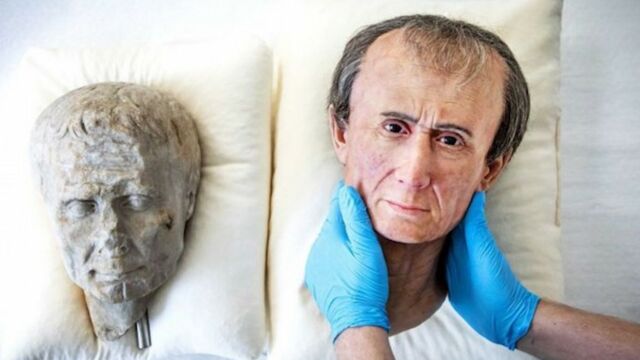History has left us an image in our heads of the ruthless, power-hungry conqueror. But did Julius Caesar really have a “big head”? While in the figurative sense, there is almost no doubt about it, maybe we should just stick to the original meaning, that is the anatomy of the roman general. It’s difficult to imagine the face of a historical figure that disappeared long before our time, and yet we now have a surprising 3D reconstruction that has just revealed something quite… unusual.
Discover our latest podcast
As a result of his work entitled “Caesar in the Low Countries”, the Dutch archaeologist Tom Buijtendorp and his team at the Rijksmuseum van Oudheden, the national museum of Antiques in Leiden, the Netherlands, who has just revealed quite a realistic 3D portrait of the roman general. The most striking thing about this scientific “masterpiece” is the surprising shape of the roman general’s skull, deformed and disproportional in comparison to everything else we know about him.
Teamwork
To come to this quite confusing result, Tom Biujtendorp had the help of anthropologist Maja d’Hollosy, who is an expert in facial reconstruction. Once together, this scientific duo began 3D scanning analysis of two marble busts of Caesar. As well as these three-dimensional models, the specialists also got a lot of information about him from coins from his time.
Using this data, the two researchers have been able to create this three-dimensional portrait of Julius Caesar from scratch, making the shape from clay to start off and then making it more realistic with silicone. This quite realistic work of art has finally put an end to the widespread ideas from centuries-old portraits of the general, particularly his hairstyle, which was more balding than we originally thought. It has finally been revealed that this incredibly ambitious warrior, was not so attractive after all.
“I [did] not let him look happy and friendly. He was a general who was about corpses”, says Maja d’Hollosy about his unpleasant appearance made worse by his unflattering large skull.
Tom Buijtendorp says he had a “crazy bulge” on his head which was a morphological characteristic that without a doubt occurred when the general was born.
The Handsome Hypothesis
“A doctor said that such a thing occurs in a heavy delivery. You do not invent that as artist,” explains Tom Buijtendorp. The skeletal structure of a newborn's skull is particularly mouldable which makes childbirth a lot easier, but in case of any problems, it can have serious consequences for the child.
This was definitely the case for Caesar, that may have occurred if his mother had a caesarean, a surgical method which funnily enough has the same name as the roman general… The stress on the skull could also explain this deformity that Dutch experts revealed in their 3D reconstruction. However, this is a theory that not everyone agrees on.
For a large number of specialists, Julius Caesar’s bulging skull could simply be the result of a natural deformity, which would contradict the caesarean hypothesis. This operation was generally practised on ill or dying women, but there are stories that mention his mother when he was an adult, implying she was still alive then.
In any case, this new representation has once again put Julius Caesar in centre stage. History left us with an image in our heads of a ruthless conqueror, but now science is tarnishing that image of one of the most famous roman generals.















